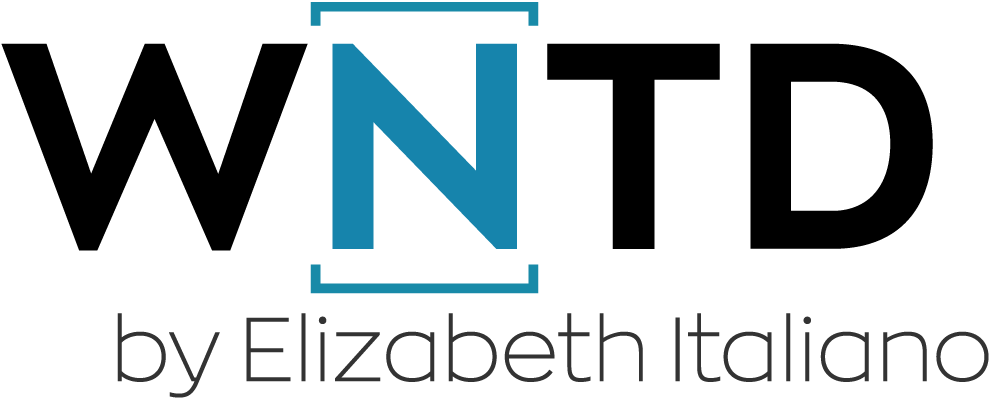In a world where our inboxes are inundated with a high volume of spam, the ability to reach and engage stakeholders through the right communication channels is just as important as the message itself. No matter how personalized or well-crafted your messaging is, it won’t have an impact if it doesn’t reach your audience or if it’s buried in a crowded inbox. The modern sales professional needs to be versatile, adopting multiple communication channels to ensure messages resonate and stand out. Here’s a breakdown of how to use the most effective channels today:
1. Email: Precision and Clarity Amidst the Noise
Despite the rise of alternative communication methods, email remains a primary channel for business communication. However, inboxes are often cluttered with hundreds of messages competing for attention, making it harder than ever to stand out.
The key to effective email communication is conciseness and value-driven content. This is where the PART framework (Problem, Action, Results, Trigger) becomes invaluable. Use this structure to quickly get to the heart of the matter:
- Problem: State the problem you are addressing
- Action: Outline how your product or service solves this issue
- Result: Share measurable outcomes
- Trigger: Provide a reason for urgency
Short emails that address a specific pain point and feature a clear call to action often outperform longer, less focused messages. Make sure your subject line is personalized to capture attention and use the email preview space effectively by starting with a compelling problem statement that immediately stands out.
Here are a couple of email examples to demonstrate tying PART into messaging while keeping it personalized and concise:
Email Example #1
112 Words
Subject: $14M OpEx Hurting Profitability
Hello [CFO Name],
Based on your company’s rising churn rates and OpEx I see that profitability and revenue goals are at risk [Problem]. This often stems from a lack of visibility into reps’ performance and requires a significant amount of time by management to address [Action]. Is this the case with Martech co?
Our conversation intelligence platform optimizes sales processes and coaching which reduces cost and increases revenue [Result].
The recent job postings for VP and Director of Sales signals an opportunity for cost reduction and performance improvement before your EOY profitability goal [Trigger]. What would it mean for you and your company to optimize sales processes while reducing costs?
Thanks,
Liz
Email Example #2:
An alternative approach is to send an even shorter email. Although 111 words are relatively brief, data from Lavender shows that emails with 50 words or fewer get 60% more replies than those over 125 words. Here’s an example of a 50-word email:
50 words
Subject: $14M OpEx
Hi [CFO’s Name],
Your annual report shows that navigating a challenging economy while achieving profitability has been a challenge. Based on your current job postings for sales, it looks like it’s tough to balance growth with cost efficiency. What would it mean if you could reduce hiring and increase revenue through conversation intelligence?
Thanks,
Indu
While this 50-word email does not address all of PART, it is still highly personalized and focuses on the Problem and a Trigger with their profitability goal. Action and Result can be addressed in follow-ups or once you’ve gotten a response and are having a conversation.
This approach can be replicated across other channels, which we get further into below.
2. Video Messaging: Add a Personal Touch
Video is becoming increasingly popular for sales and client communications. Tools like Vidyard and Loom allow you to record personalized messages that can be embedded into emails or sent via other channels.
Why it works: Video messaging humanizes your outreach, allowing you to convey enthusiasm, personality, and authenticity. This is especially useful when trying to break through crowded inboxes or add a layer of engagement to an email sequence.
You can use video to:
- Introduce yourself in a warm, personal way
- Troubleshoot or demo a product feature
- Provide feedback on a client’s question or concern
- Explain complex issues or solutions
For example, sending a 1-minute video demo that addresses a specific stakeholder’s challenge can leave a stronger impression than a long email filled with text.
3. Voice Notes: A Personal and Authentic Approach
Voice notes have become a popular way to communicate on platforms like LinkedIn. They offer a brief, personable way to deliver your message and allow the recipient to hear the passion and sincerity in your voice, which can be harder to convey through text.
Why it works: Voice notes are often underused, which makes them stand out in crowded communication channels. They’re quick to listen to, and their informal nature makes them feel less intrusive while still maintaining a personal connection.
On LinkedIn, you can send a 30-second voice note after connecting with someone to provide quick insights or ask a question. Just like with other forms of communication, make sure the message is focused and value-driven, aligning with the recipient’s needs.
4. LinkedIn Group Chats: Engage Stakeholders Efficiently
LinkedIn Group Chats can be a powerful tool when used correctly. They allow you to engage multiple stakeholders at once, facilitate group discussions, and bring in champions and decision-makers. However, it’s essential to handle group chats with care.
Best Practices:
- Coordinate with your champion: Before adding stakeholders, ensure your champion is aligned with your approach.
- Provide context: Tailor your message to each person in the group, addressing their specific role and interest.
- Avoid surprises: Don’t use group chats to bypass key stakeholders. Ensure everyone feels included and respected.
For example, you might use a group chat to introduce a new initiative and outline how each stakeholder can contribute to the project’s success, using the PART framework (as mentioned above) to structure your message.
5. Communities and Forums: Build Credibility Before You Sell
Industry-specific communities and forums are excellent platforms for organically engaging with prospects and building credibility. Platforms like Reddit, Stack Overflow, and LinkedIn groups allow you to participate in discussions relevant to your product or industry.
However, these platforms should not be used for direct selling right away. Instead, focus on providing valuable insights and engaging in conversations. Over time, this establishes you as a thought leader, and prospects will naturally turn to you when they need solutions.
Best Practices:
- Listen first: Understand the common pain points and discussions happening in the community.
- Contribute value: Share insights, advice, or data before you mention your product.
- Engage gradually: After you’ve built trust, start reaching out to individuals who might benefit from your solution.
For example, if you’re selling a data analytics tool, engage in discussions around data challenges and only introduce your product when it feels like a natural fit for the conversation.
6. Cold Calling: The Surprising Power of Voice
While many sales professionals shy away from cold calling, it’s still one of the most direct and effective ways to engage prospects. With more people working in hybrid environments or returning to the office, a well-timed cold call can set you apart from competitors who rely solely on email or LinkedIn.
Why it works: Cold calls allow for real-time interaction and feedback. You can adjust your pitch on the fly, ask clarifying questions, and build rapport through your voice.
Tips for Cold Calling Success:
- Personalize your call: Use PART insights to tie your message to a specific pain point or trigger.
- Keep it short: Respect the prospect’s time and get to the point quickly.
- Follow up: Cold calls are often the start of a conversation, not the end. Follow up with an email or LinkedIn message to keep the dialogue going
- Allows you you practice your pitch: everytime you leave a voicemail it gives you the opportunity to practice your pitch. Over time you will get better and better at delivering it.
Example: A cold call that starts with, “Hi [Name], I’ve noticed that your team might be struggling with [specific issue]. I’d love to explore how we can reduce your churn by 15% in the next quarter,” can quickly grab attention and open the door for a deeper conversation.
Customer Success Managers should also recognize the value of this skill. It’s not uncommon to lose touch with a main point of contact, especially when we’re single-threaded and don’t have other relationships within the client account. Sometimes, picking up the phone can be more effective than sending email after email. While some might argue that calling a client isn’t the same as cold calling, it can feel that way to the recipient if they don’t know you or your solution well. Either way, it’s another communication channel that CSMs can take advantage of to strengthen relationships.
Conclusion: Using Multi-Channel Communication for Maximum Impact
In modern selling and customer engagement, relying on one communication channel is no longer enough. To effectively reach and engage stakeholders, you need to use a multi-channel approach, integrating email, video, voice notes, LinkedIn, communities, and cold calling into your strategy.
Each channel has its strengths, and by aligning your messaging with the PART framework, you can ensure that your communication is personalized, relevant, and impactful. Whether you’re troubleshooting an issue, closing a deal, or engaging a new prospect, modern-day communication tools allow you to stand out and build stronger connections with your audience.
By understanding the nuances of each channel and knowing when and how to use them, you’ll be better positioned to reach your stakeholders effectively and drive meaningful results.
For more on how to personalize your communication or choose the right channel for better engagement and other revenue topics, you may enjoy our Quest to Quota Attainment Course. It is broken up into short modules, making it easy to learn and practice new skills in short but effective time blocks each day. And finally, if you need hands-on support for your revenue-generation efforts, check out the services we offer.
Don’t want to miss out on our revenue generating tips? Sign up for our newsletter here.




